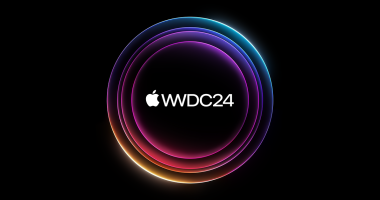In the rapidly evolving world of artificial intelligence, Google’s latest innovations, the Gemini 1.5 models and the Trillium Tensor Processing Unit (TPU), are setting new benchmarks for performance and efficiency. These groundbreaking technologies, unveiled at the Google I/O 2024 conference, promise to revolutionize AI applications across various industries. But what makes these advancements so significant, and how do they compare? Let us dive into the details of Google Gemini 1.5 and Trillium TPU to understand their impact on the future of AI.
Google’s Gemini 1.5 models are designed to push the boundaries of AI performance. With a 4.7x increase in computer performance compared to previous generations, these models are built to handle complex tasks with unprecedented speed and efficiency. The Gemini 1.5 models also feature a 1 million token context window, allowing them to understand and generate text with a much broader context. This makes them particularly effective for tasks that require long-term coherence and consistency, such as narrative generation and dialogue systems.
On the hardware front, the Trillium TPU represents a major leap forward. This sixth-generation TPU delivers a 4.7x increase in peak computer performance per chip compared to its predecessor, the TPU v5e. Trillium’s enhanced performance is achieved through expanded matrix multiply units and increased clock speeds. Additionally, Trillium boasts a doubling of the High Bandwidth Memory (HBM) capacity and bandwidth, as well as the Inter-chip Interconnect (ICI) bandwidth, significantly enhancing the efficiency and speed of training and serving AI models.
The Gemini 1.5 models are not just about raw performance; they also incorporate advanced architectural features like the Mixture-of-Experts (MoE) architecture. This allows the models to dynamically allocate resources based on the complexity of the task, improving both efficiency and scalability. In practical terms, this means that Gemini 1.5 can handle a wide range of applications, from natural language processing and sentiment analysis to language translation and multimodal AI, which integrates text, images, and audio.
Trillium, on the other hand, shines in terms of energy efficiency and scalability. It is over 67% more energy-efficient than TPU v5e, making it a more sustainable option for large-scale AI deployments. Trillium can scale up to 256 TPUs in a single high-bandwidth, low-latency pod, and with multi-slice technology and Titanium Intelligence Processing Units (IPUs), it can scale up to hundreds of pods. This allows for the creation of building-scale supercomputers interconnected by a multi-petabit-per-second datacenter network, capable of handling the most demanding AI workloads.
When comparing Gemini 1.5 and Trillium, it is clear that they serve different but complementary roles in the AI ecosystem. Gemini 1.5 excels in enhancing AI model performance through improved architecture and long-context understanding, making it ideal for complex natural language processing and multimodal AI tasks. Trillium, with its hardware boost and specialized accelerators for advanced AI workloads, is highly efficient for training and serving large-scale AI models.
Both technologies emphasize energy efficiency, which is crucial for reducing the environmental impact of AI research and applications. Trillium’s impressive scalability complements the performance enhancements of Gemini 1.5, enabling large-scale AI deployments that are both powerful and sustainable.
The introduction of Gemini 1.5 and Trillium is expected to have a profound impact on AI research and development. The increased performance and efficiency of these technologies will enable researchers to tackle more complex problems and develop more sophisticated AI applications. The long-context understanding capability of Gemini 1.5, combined with the hardware advancements of Trillium, opens up new avenues for research in areas such as narrative generation, dialogue systems, and knowledge representation.
Looking ahead, the Gemini 1.5 models and Trillium TPUs are likely to pave the way for even more advanced AI technologies. Google’s commitment to continuous improvement suggests that future iterations will build on the successes of these models, incorporating new features and capabilities to further enhance performance and efficiency.
In conclusion, the Gemini 1.5 models and Trillium TPUs represent significant milestones in the evolution of AI. With their impressive performance, energy efficiency, and advanced capabilities, they are poised to revolutionize a wide range of applications across various industries. As AI continues to advance, these technologies will undoubtedly play a crucial role in shaping the future of this exciting field.
Also Read: AAI Blogs
For additional information on Google Gemini 1.5 and Trillium TPUs:
- Google DeepMind: Gemini
- Introducing Gemini 1.5, Google’s Next-Generation AI Model
- Google Cloud Blog: Introducing Trillium, Sixth-Generation TPUs
- The Register: Google Reveals Its 6th-Gen ‘Trillium’ TPUs
Dataconomy: Trillium TPU – Meet The Hidden Gem Of Google I/O









